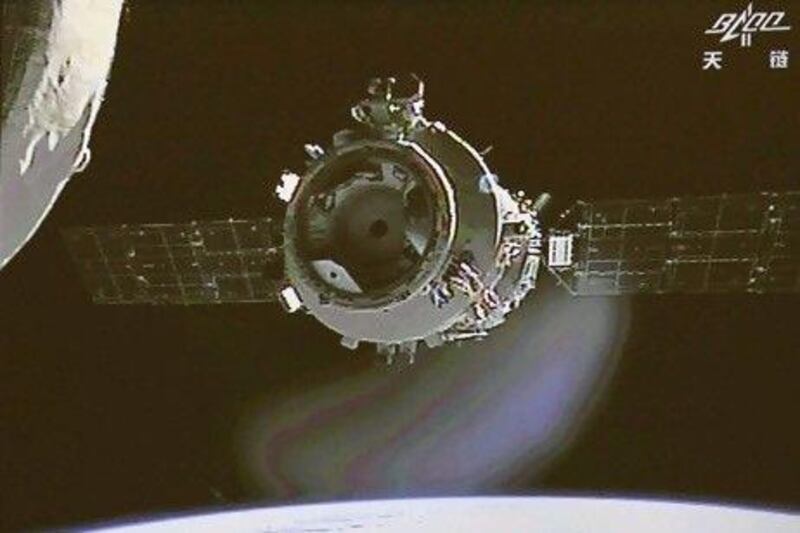A Chinese space laboratory will vapourise when it re-enters the Earth’s atmosphere, the UAE Space Agency has confirmed.
The UAE Space Agency and the International Astronomical Center have announced a joint campaign to monitor the space debris as China's Tiangong-1 Space Laboratory falls back to Earth.
The fall is expected to take place in mid-March in areas between 43 degrees north and south latitude, which includes most of the Arab region.
It will be rendered harmless as it breaks apart before reaching the ground on its return.
“The uncontrolled fall will pose no danger to Earth and will not impact any populated areas,” the UAE Space Agency said in a statement on Sunday.
“Although there is a chance some debris may reach the ground, it will fall into the sea and will not impact lives or human activity.”
The satellite was launched in September 2011 for use in a variety of experiments, but there was communication failure in 2016.
The laboratory includes two solar panels and weighs 8.5 tons. It is 10.5 meters long and 3.3 meters wide in diameter.
“Earth witnesses the fall of many objects, including satellites and other debris, on a daily basis. These objects do not pose a threat to the planet or its population due to their small size or the speed at which they are vapourised in the Earth’s atmosphere,” said Mohammed Nasser Al Ahbabi, director general of the UAE Space Agency.
“Those that make it through are often scattered over vast areas in the form of very small stones.”
He said the country was well equipped and experienced in monitoring the coordinates of space objects, meteors and meteorites.
“Many of our capabilities stem from the UAE Meteor Monitoring and Filming Network launched two years ago to support scientific research. The network successfully provides reports and studies on meteor traffic over the UAE,” he said.
_____________
Read more:
Special report: The UAE's journey into space
Dreams of Emirati teenager Alia Al Mansoori launched into space
_____________
Three stations across the UAE are part of this network that was a joint venture launched by the UAE Space Agency and the IAC. The stations record astronomical phenomena with cameras that automatically start recording once a meteor is detected.
Whether part of a meteor shower or space debris, once a falling object is detected by more than one station, its path is calculated so that the source can be determined.
The UAE Space Agency, the first national space agency in the region, was established in 2014, and is responsible for regulating and supporting the space sector under federal law. This includes oversight and funding of space missions such as the Mars Hope Probe, the UAE’s unmanned mission to Mars.






